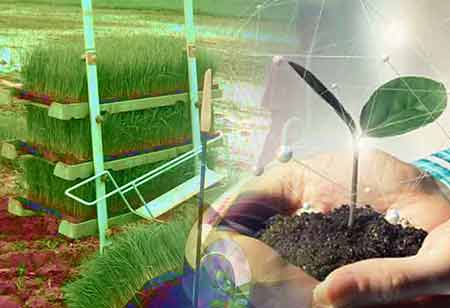Thank you for Subscribing to Agri Business Review Weekly Brief
Significance Of Smart Agriculture In The Future
The term smart agriculture refers to using technologies like the IoTs, sensors, location systems, robots and AI on your farm. The final goal is to increase the quality and quantity of the crops while improving

By
Agri Business Review | Saturday, July 23, 2022
Stay ahead of the industry with exclusive feature stories on the top companies, expert insights and the latest news delivered straight to your inbox. Subscribe today.
Smart agriculture is a fairly new term, and most farmers are unfamiliar with what exactly stands behind it.
Fremont, CA: The term smart agriculture refers to using technologies like the IoTs, sensors, location systems, robots and AI on your farm. The final goal is to increase the quality and quantity of the crops while improving the human labor employed.
Example technologies employed in smart agriculture are:
Precision irrigation and precise plant nutrition
• Climate handling and control in greenhouses
• Sensors – for the soil, light, water, moisture, temperature handling
• Software platforms
• Location systems – GPS, satellite, etc
• Communication systems – based on a mobile connection, LoraWan, etc
• Robots
• Analytics and optimization platforms
The Internet of Things connects all these technologies – this is a mechanism for connectivity between sensors and machines, following in a complex system that manages your farm based on data received. Thanks to this system, farmers can monitor the processes on their farms and make strategic decisions remotely – from their tablet, phone or another mobile device – without being on the open fields, in their greenhouse, orchard, vineyard, etc.
What are the processes taking place on a farm using smart agriculture?
1. Data collection
The sensors installed at all critical places in the farm gather and transmit data about the soil, air, etc.
2. Diagnostics
The system analyzes the collected data, and conclusions are made regarding the object's status or process monitored. Potential problems get identified.
3. Decision making
Based on the issues identified in the previous steps, the software platform and/or a human managing the platform decides on actions to take.
4. Actions
The actions detected in the previous step are performed. The sensors perform a new measurement of the soil, air, moisture, etc., and the cycle starts again.
This automated smart farming process results in high precision and 24/7 control, eventually leading to significant savings in all key resources – water, energy, fertilizers, time spent by strategic people, and lower-qualified human resources.
Customers using Smart agriculture solutions on their farms can save up to 85% in water consumed and up to 50% in energy consumed. They also report up to a 40% increase in agricultural productivity while decreasing the cost of fertilization and chemical processes and up to 60% fewer losses resulting from human error.





